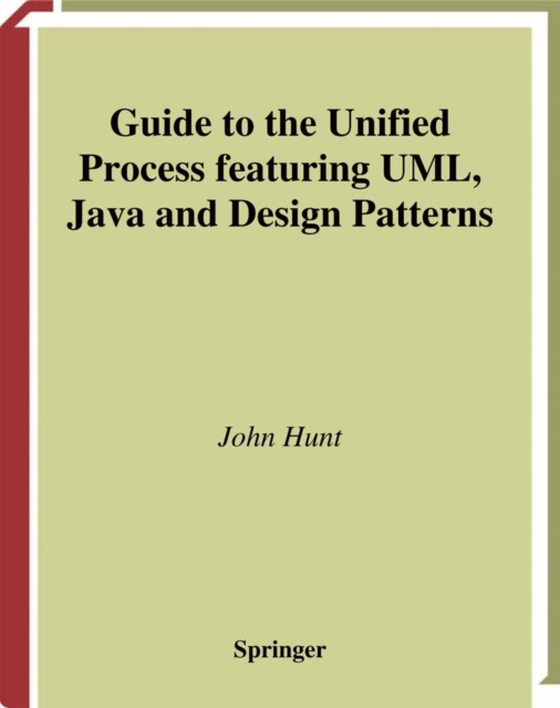
Guide to the Unified Process featuring UML, Java and Design Patterns e-bog
875,33 DKK
(inkl. moms 1094,16 DKK)
1.1 Introduction This book introduces and guides the you through the use of the Unified Modeling Language (UML) and the Unified Process (both originally devised by Grady Booch,James Rumbaugh and Ivar Jacobson) and their application to Java systems.This means that the book will present you, thereader,withthenotationusedintheUMLandthestepsdescribedbytheUnifiedProcesswith particular reference to t...
E-bog
875,33 DKK
Forlag
Springer
Udgivet
18 april 2006
Genrer
UMC
Sprog
English
Format
pdf
Beskyttelse
LCP
ISBN
9781852338565
1.1 Introduction This book introduces and guides the you through the use of the Unified Modeling Language (UML) and the Unified Process (both originally devised by Grady Booch,James Rumbaugh and Ivar Jacobson) and their application to Java systems.This means that the book will present you, thereader,withthenotationusedintheUMLandthestepsdescribedbytheUnifiedProcesswith particular reference to the Java environment (including the classes and the syntax). The book itself is structured in three parts. Part 1 introduces object-oriented analysis and design and the Unified Process. The UML is introduced, as necessary, to support the Unified Process steps.Part 2 discusses the topic of design patterns,while Part 3 looks at the UnifiedProcessandUMLintherealworld. The first part of the book is structured in the following manner: Chapter 2: Object -Oriented Analysis and Design This chapter surveys the most significant object-oriented design and analysis methods to emerge since the late 1980s. Chapter 3: An Introduction to the UML and the Unified Process This chapter provides the background to the UML and the Unified Process. It also presents a summary of both. Chapter 4: Software Architecture and Object-Oriented Design This chapter explains and justifies why an architecture is essential to the successful design and implementation of a large object-oriented system. Chapter 5: Requirements Discipline: Use Case Analysis Thischapterintroducestherequirementsdiscipline(whichmayalsobeknownasUseCaseAna- sis).Thisdisciplineattemptstoidentifywhatthefunctionalityofthesystemwillbe.Theseusecases will be essential as the backbone to the whole design process.
 Dansk
Dansk

